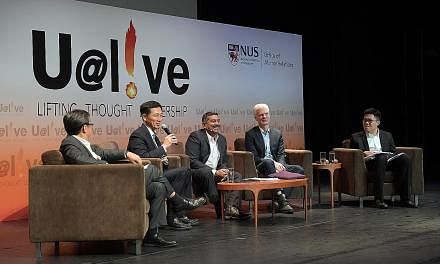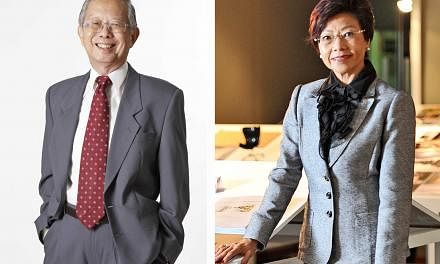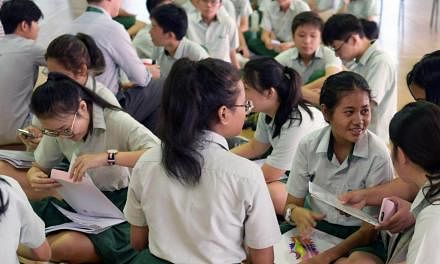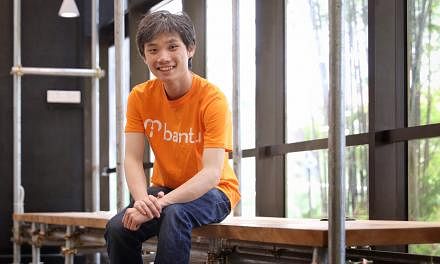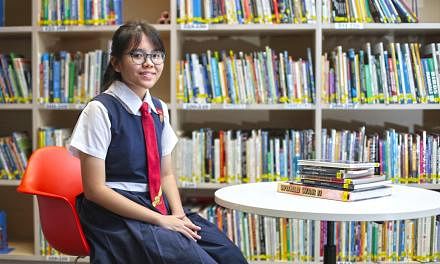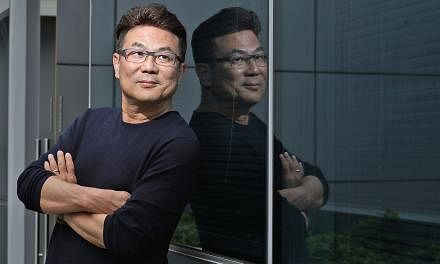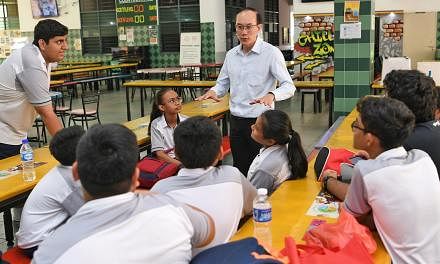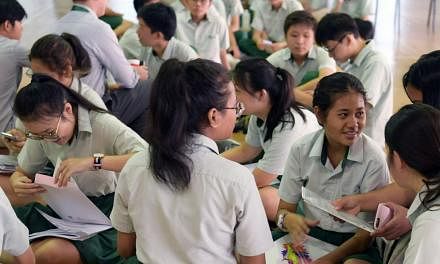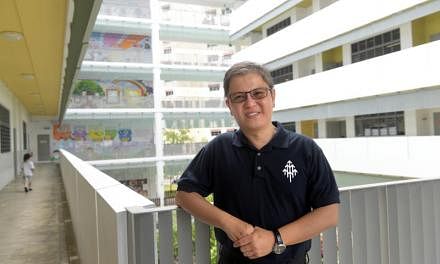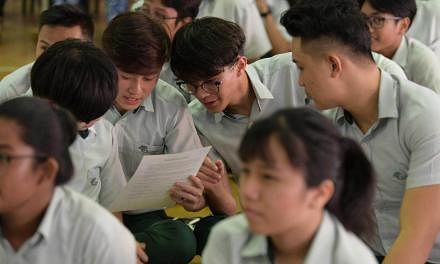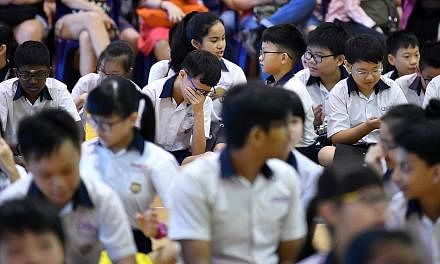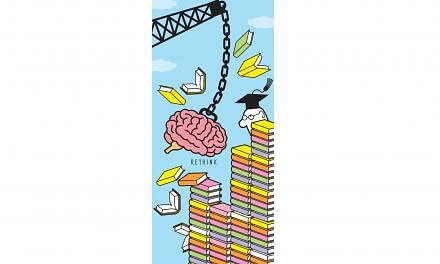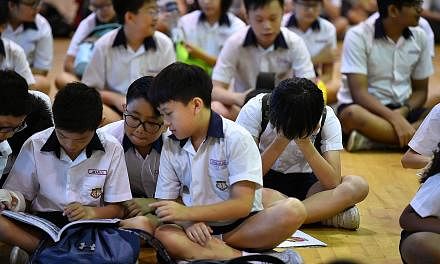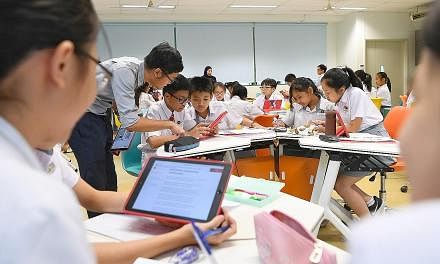Streaming was implemented during the "efficiency-driven" phase of the education system in the 1980s and 1990s. We were concerned about the huge number of dropouts who could not read or write at the end of primary school. We had to move away from a one-size-fits-all education system because if students could not catch up with their lessons, and did not understand what was taught, they would lose interest and drop out.
Through streaming, we customised education according to the learning rates of our students. It has successfully reduced school attrition rates from about one-third of every cohort to less than 1 per cent now. The introduction of the Normal (Technical) stream contributed significantly to this outcome. Without reducing attrition through streaming, social stratification would have been far worse.
Over time, parents and students began to see the benefit of learning at a pace and rigour suited to their academic abilities. Today, for students whose PSLE scores allow them a choice between two streams, there are in fact many who prefer a stream where they can study at a more comfortable pace.
However, there are downsides to streaming too. There is always some margin of error, especially if streaming is done at a young age. Further, in its original form, streaming assumed that students needed a certain pace of learning in all their subjects, whereas many students, in fact, have uneven strengths across different subjects.
Finally, entering a stream that is considered "lower" can carry a certain stigma that becomes self-fulfilling or self-limiting. Students can develop a mindset where they tell themselves: "I am only a Normal stream student and this is as good as I can be." It becomes self-fulfilling.
We have been grappling with this trade-off between customisation in education and the downside of stigmatisation. That is why over the years, we have made significant changes to the streaming system.
CHANGES OVER THE YEARS
A major transition took place from the mid-2000s, when the Ministry of Education (MOE) phased out streaming in primary school over four years. We had three streams in primary school - EM1, EM2 and EM3. The first step was to merge EM1 and EM2, since the only difference between the two streams was the standard of Mother Tongue Language (MTL).
Later, MOE shifted to customising learning not at the stream level, but at the subject level. We introduced different standards for the subjects - Standard and Foundation for English, Maths and Science; and Higher, Standard and Foundation for MTL. We called this Subject-Based Banding (SBB) and started it since the mid-2000s.
Hence, by 2008, instead of having three streams, we had a single primary school course. Within the course, students could learn subjects at different standards, based on SBB.
There were sceptics at that time who asked: "What's the difference between streaming and SBB? It's old wine in a new bottle."

There is a big difference. Streaming separates education into different courses, and we put students into each course. So each course is like a big jar. You can put different cookies into the jar, but when you close and label the jar as pineapple tarts, all the goodies in it get labelled as pineapple tarts too, accurately or inaccurately.
SBB changes this fundamentally. Essentially, we break the jar, students come out of it, take subjects of varying difficulty, based on their academic ability. Taking one or two subjects at the Foundation level is not tantamount to labelling the child. And equally important, it encourages students to find their strengths.
Since we introduced SBB, many students who would previously have been in the EM3 stream ended up taking one or more subjects at a higher level. We continued to reap the benefits of customisation of education, but minimised the downsides of labelling.
This is much harder to do for secondary school, because of the larger number of subjects involved. More than a decade ago, we started a form of SBB in secondary schools, by allowing students in the Normal (Academic) and Normal (Technical) streams to take up to two subjects at a higher level starting from Secondary 3, if they had done well in those subjects in lower secondary.

It worked well, and in 2014, we formalised a bolder form of SBB in 12 prototype secondary schools. N(A) and N(T) students in lower secondary could take English, MTL, Maths, and Science at a more rigorous standard, if their PSLE scores or school examination results for these subjects justified it.
The results have been encouraging. About half of the N(A) students in the prototype schools took up subjects at the Express level. If we break down the numbers, 25 per cent of N(A) students took one Express-level subject; another 11 per cent took two subjects, and over 10 per cent took three subjects, or were laterally transferred to the Express stream.
The two batches of students who have participated in SBB in the prototype schools have completed their secondary school national examinations. Their results show that Normal and Express stream students, taking the same O-level examinations, perform comparably.
To illustrate, for the national examinations in 2018, 25 per cent of Sec 4 N(A) students who took O-level English got A1 or A2, compared with 24 per cent for Express students. For O-level Maths, 26 per cent of N(A) students got A1 or A2, compared with 50 per cent for Express students. For O-level Combined Science, it was 33 per cent for N(A), compared with 34 per cent for Express students.
The Normal stream students have held their own. Our surveys also showed that students, parents and teachers overwhelmingly welcome this. Given the positive outcomes, last year, we expanded SBB nationwide.
We are now ready to take a further, major move.
CHANGES TO COME
There will be two important milestones - 2020 and 2024. Beginning in 2020, about 25 pilot secondary schools will implement Full Subject-Based Banding, with more schools joining in subsequent years. How is Full SBB different from the vanilla SBB of today? There are three main differences.
One, we will allow lower secondary school students to study more subjects at a higher level - not just English, MTL, Maths and Science today, but also others, such as Geography, History and Literature. Chemistry and Biology will only be available in upper secondary.
Second, we will also allow students of Express and N (A) streams the flexibility to take a subject offered in N (A) or N (T) streams respectively, such as Mobile Robotics.
Three, beyond the academic aspects, Full SBB will also give pilot schools an opportunity to reshape the social environment in schools to benefit their students.
Day-to-day practices in schools play a big part in shaping a child's self-confidence, sometimes more than the academic curriculum.
RESHAPING SCHOOL ENVIRONMENT
I learnt this from Mr Tan Chor Pang, the principal of Boon Lay Secondary. The late-coming and absenteeism rates among Normal stream students in Boon Lay Secondary had not been healthy. However, Chor Pang observed that when it came to Co-Curricular Activities (CCAs), the students were very engaged. In an unprecedented move, and leveraging the fact that Boon Lay Secondary has a smaller enrolment, Chor Pang decided to reorganise form classes according to CCAs rather than academic streams. Almost immediately, late-coming and absenteeism rates fell drastically.
I was fascinated by this unorthodox practice and decided to visit the school and speak to teachers and students. I found out that every morning, students would gather in their CCA groups for morning assembly. They also undergo Character and Citizenship Education classes and learning journeys based on their CCA form classes. For academic lessons, they would break out into different classes based on SBB.
The students told me that many of them had personal and other family problems. Teachers and counsellors could help, but they also needed the peer support that they received from their seniors in CCA. Now, they look forward to attending morning assembly because that is when they meet friends and seniors from their CCA groups.
One student told me: "Now, I can pour my heart out to my seniors every morning before assembly, even if it is for 10 minutes. But to do that, I must come to school, and come on time!"
Another Normal stream student said that in the past, during morning assembly, a teacher might admonish a noisy class by saying: "4N(T), keep quiet!" All the other N(T) students immediately felt like they were singled out. Now, the teacher would say: "NCC, keep quiet!" and the Normal stream students would feel okay.
The students who have gone through almost two years of the new form classes in Boon Lay Secondary have recently completed their national examinations. Across the school, results have shown improvement. MOE will need to study their results further, but there is now a genuine belief that the social environment of the school can positively influence a student's academic behaviour and performance.
I also visited another school, Edgefield Secondary, which had decided to reorganise form classes to include students from all three streams, starting from this year. Not by CCA or academic classes, but mixed form classes with students from all three streams.
Each Sec 1 form class goes through about half of their lessons together, for subjects like Character and Citizenship Education, Design and Technology, Art, Music and Physical Education, where there is little need to customise lessons based on academic abilities. The other half, comprising academic subjects such as English, MTL, Maths and Science, they are grouped according to SBB.
It has only been a couple of months, but feedback has been generally good. The students I spoke to had no basis for comparison, so they said it is very good, and are very happy, as expected. The teachers noticed that students were helping one another more frequently in class, and students from Normal stream were stepping forward to take up leadership roles during group work.
The principal, Mr Lee Peck Ping, told me that a handful of parents were concerned that this might slow down learning in class. Peck Ping painstakingly explained how SBB worked, what students are learning as a form class, and how classes for academic subjects were still banded based on the learning abilities of the students. Through this explanation, he managed to address the concerns of most parents.
He told me that a very small number of parents were still worried, and felt that had they known, they would not have sent their children to Edgefield Secondary. I understand the concerns of these parents. But Edgefield Secondary was making the right trade-off, to develop students both academically and socially. It was in its own way, taking the lead in reshaping our existing culture for the better.
Schools such as Boon Lay and Edgefield are important trailblazers and I thank them. After several years of progressively implementing SBB, and with good outcomes both academically and socially, the time is right for us to move to Full SBB.
Implementing Full SBB will be a multi-year transition. By the start of 2024, we will be ready to take the next step, which is the most crucial. Two things will happen then.
One, we would have rolled out Full SBB and new ways of organising form classes, across the education system. The pioneering practices such as in Boon Lay and Edgefield will become the norm.
Two, to reflect the reality of Full SBB as a more flexible, single course, we will enrol the first batch of Sec 1 students, who will graduate with a common secondary school certificate. This common certificate will combine the current O-level, N(A) and N(T) certificates. It will list the subjects completed and the standard band of each subject. For secondary schools, we will use G1, G2 or G3. G stands for "General". G1 will roughly correspond to today's N(T) standard, G2 to N(A) standard, and G3 to Express standard.
Singapore and Cambridge will co-brand this new certificate, as both are strong international brand names in education, which will enhance the recognition and value of the certificate. With Full SBB implemented, form classes reorganised across the board, and a combined secondary school education certificate, we would have effectively merged Express, N(A) and N(T) into a single course. The Express, N(A) and N(T) streams, together with their labels, will therefore be phased out.
So from three education streams, we will now have "One secondary education, many subject bands". We will no longer have fishes swimming down three separate streams, but one broad river, with each fish negotiating its own journey.
A PERSONAL STORY
The emphasis of our education system has evolved over the years. Four decades ago, we made major progress in customising education to reduce student attrition. From two decades ago, we have been redesigning the system to develop the varied abilities of our students.
What is the focus now? In the digital era, knowledge has become very accessible. One smart phone and you can access all the knowledge available. But skills carry a premium. Skills - both technical and soft - are what make us human, and inoculate us from being replaced by computers and robots. But skills take a lifetime to acquire and hone, and one must be driven by passion to do so. Skills. Passion. Growth. In this phase, more than ever, we are centred on the need to learn for life, to prepare our students for the future.
The third thrust of our "Learn for Life" movement - "One education system, many subject bands" - is another step in this direction. We are able to take these steps now because of the work that was done in the past.
This has to be our attitude when it comes to education - never complacent, always anticipating the future, figuring out what needs to change next, planning it out, and implementing at a pace that takes into account the trade-offs, complexities and the immense impact any changes will have on our students. We should never stay frozen for long periods, only to make sudden changes years later.
I am confident that "One secondary education, many subject bands" will benefit many students.
I grew up in a Chinese-speaking family, and when I was young, the only books I read were Chinese comics. I entered Primary 1 without being able to understand English very well, much less reading or writing. My late mother, a Chinese teacher, tried to teach me, but her English was very limited.
Then sometime in Primary 3, I had an eureka moment. I figured out that if "b-a-r" reads "bar", and "b-e-r" reads "ber", "b-a-r-b-e-r" put together is barber, the guy who cuts my hair. In other words, I figured out phonics.
From then on, I started to read some English books. My first book was The Three Musketeers. I could read the sentences, but had a problem - I hardly knew what they meant. In secondary school, my English standard was what my classmates would describe as "cannot swim". This affected other language-dependent subjects such as History and Geography. So how did I pass? By memorising large chunks of text, which I could regurgitate during examinations.
If I were in primary school today, I would probably have been put into a Learning Support Programme, which would have done me good. In secondary school, it would also have been better for me to be placed in a less demanding band for English, which would give me time to pick up the basics, and then upgrade to a more demanding band if I could meet the standards. I should have done G2 or G1 English.
There are some students who are very strong in every academic subject. But most, like myself, have uneven strengths, and even specific weaknesses. It is just the way humans are. The challenge of our education system is to cater to that. That is the central purpose of this change.
Put to rest the mistaken notion that there is a single, dominant path to success that starts from a very young age. The school system will become far more flexible than it is today, so that we can customise learning to the student, to give them time to blossom at different points in their lives, while anchoring the belief that we can grow and get better.
In making this change, we are developing a child with the knowledge that the pace of his or her learning changes with time, all the way to adulthood. We are acting on our conviction that our students benefit most when there is diversity across schools and within schools. Above all, we are guided by our belief that no child's fate is fixed, and in an environment that encourages growth and development and promotes holistic education, they will fulfil their potential to be sons and daughters of Singapore that we can be proud of.
